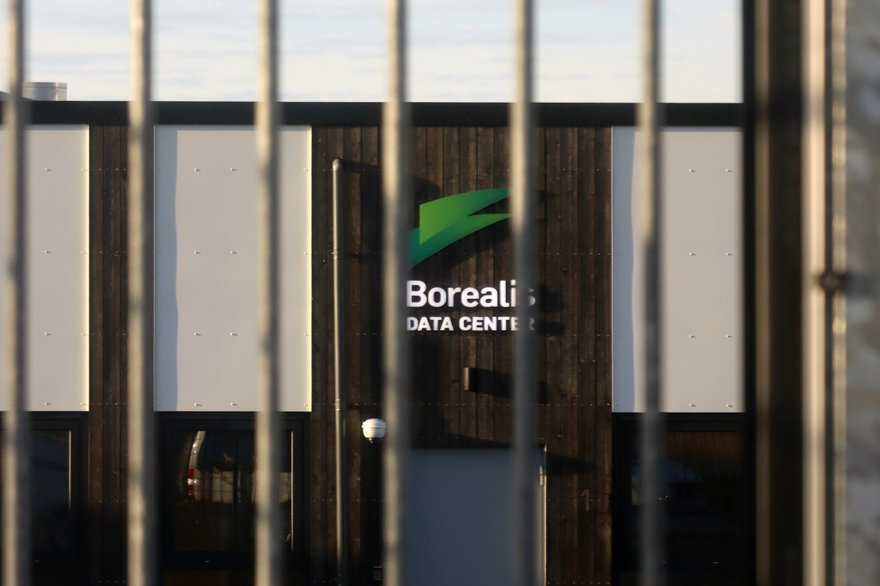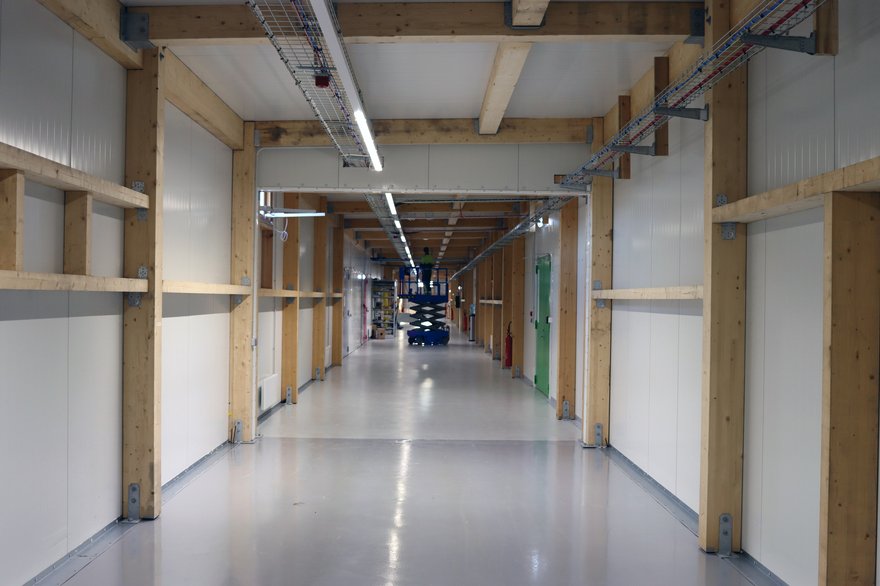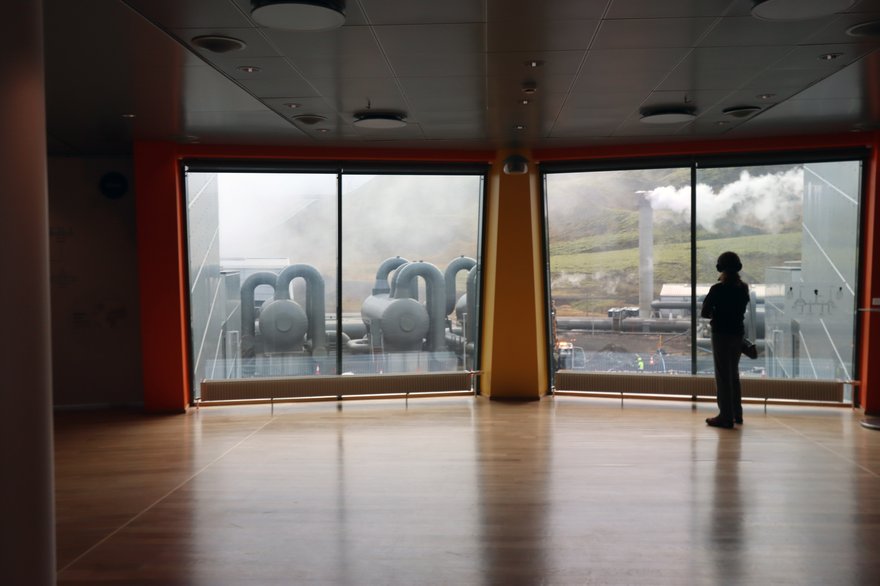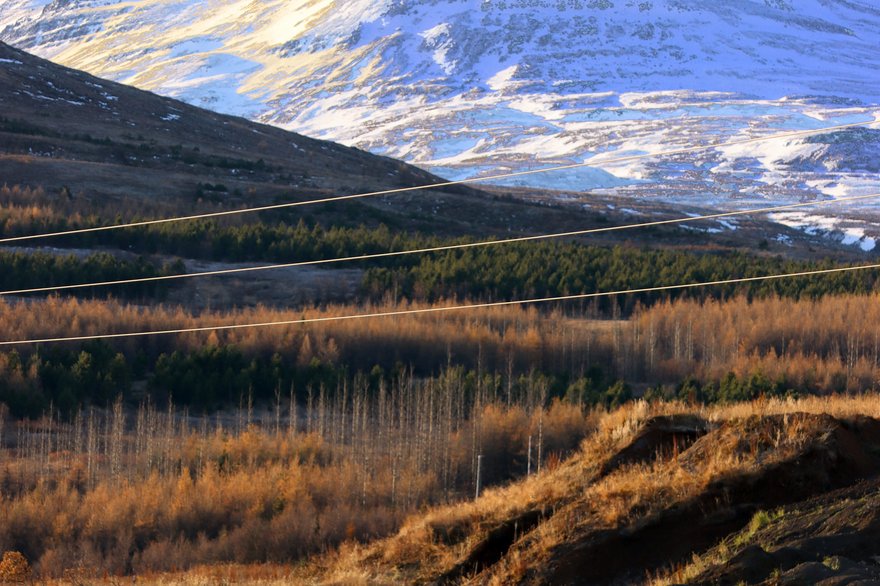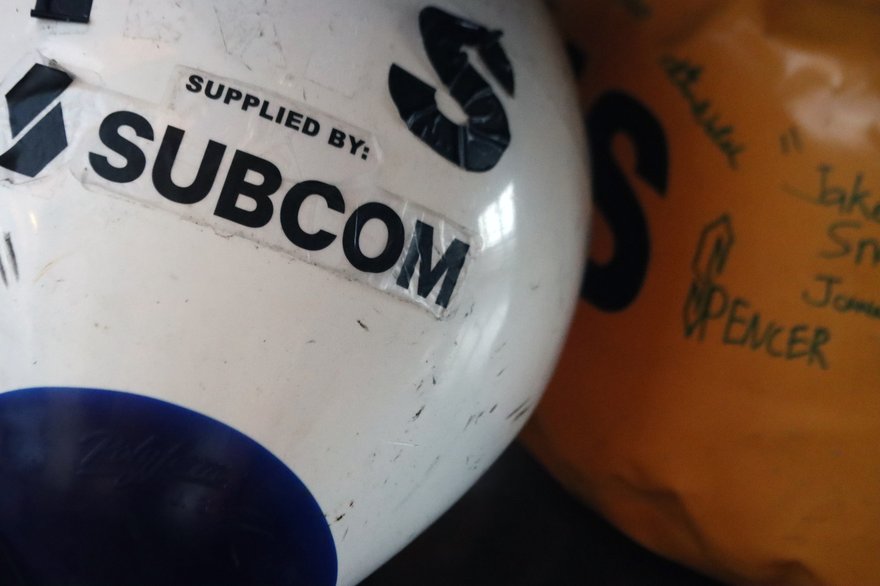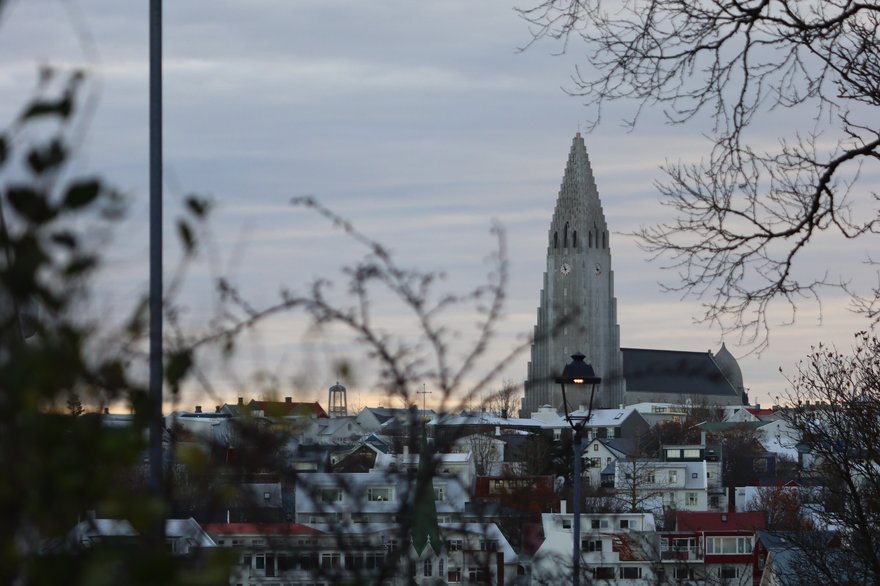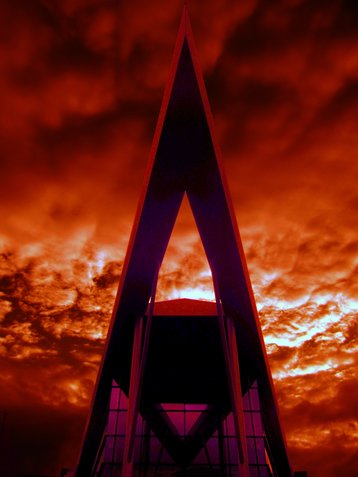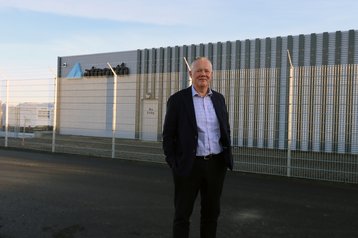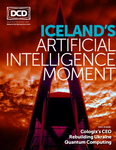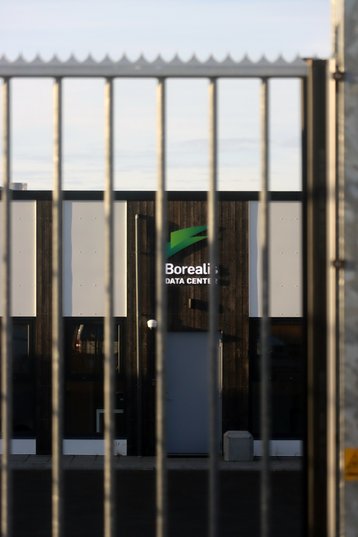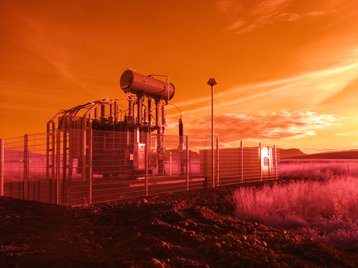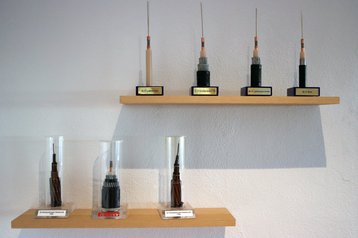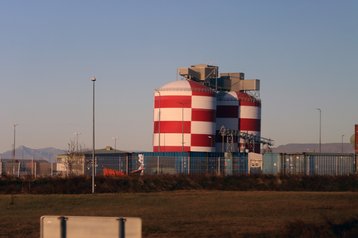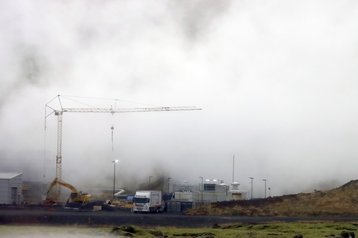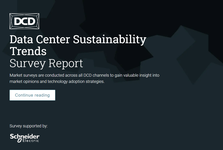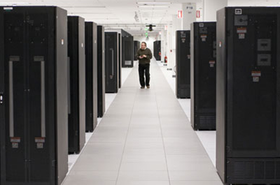Iceland has long pitched itself as a perfect place for data centers, thanks to its cheap, clean power, and cold temperatures.
But, for years, the majority of the companies that answered the call were cryptominers, riling locals and doing little to shift workloads from the rest of the world.
On a visit to Iceland, DCD found the country is ready to make its case again, thanks to a new submarine cable, increasing pressure for sustainability, and - most of all - the surge in artificial intelligence demand.
This feature appeared on the cover of the latest issue of the DCD Magazine. Read it for free today.
Bringing data centers to Iceland
"Data centers are here to stay," Iceland's president Guðni Th. Jóhannesson told DCD.
"When I was studying in England in the late '80s, there was no Internet. My mom sent me newspapers that arrived 14 days later, and I read everything - the obituaries, the advertisements, everything. This was my connection to Iceland. I'd make a phone call, twice a month, just to find out if everybody was still alive.”
Things have changed dramatically since. “Wherever you go, you are connected,” Jóhannesson said. “The world has shrunk."
This has meant that the people of Iceland are no longer disconnected from the wider world, but the digital age also comes with a decidedly physical footprint.
"Last night, I attended a sporting event. I took loads of videos, listened to Spotify on the way back, downloaded necessary stuff, unnecessary stuff,” Jóhannesson said. “But I didn't pay any attention to the energy, because it’s just the cloud - I don’t see smoke billowing up out of my laptop or phone.”
As the data center sector expands rapidly, fueled partly by AI demand which now consumes power comparable to entire cities: “This might be a cause for concern,” he argued. “It should make us aware that if we want to be sustainable, we have to be conscious of the energy we use and how we use that energy.”
Iceland’s president wants more connectivity, but he told us it shouldn’t come at a cost. He said it should use Iceland’s 100 percent renewable grid.
The crypto island
Most early Icelandic data centers had little to do with connectivity or services: They came to mine Bitcoin.
A 2018 report from KPMG found that 90 percent of the nation's data center capacity mined crypto, and warned that the figure was only set to rise.
Mining has few demands except cheap power, so many crypto data centers forgo security and other features of a traditional facility. In 2018, this left them vulnerable to the 'Big Bitcoin Heist,' in which a gang stole 600 servers worth almost $2 million from facilities across the country.
The peak of the crypto craze soon passed, and those that survived now believe their businesses are more mature, their facilities more secure, and that they are ready for enterprises.
"Crypto has reduced substantially in Iceland," atNorth CEO Magnús Kristinsson told DCD. "I would be very surprised if it vanishes entirely, but we are now seeing AI contracts that are the same size as we could sign crypto contracts for seven, eight years ago."
The company acquired the data centers of Advania, one of which was hit by the Bitcoin bandits five years ago. Visiting atNorth's newer ICE03 facility, DCD noted its high fences, man traps, and copious CCTV cameras.
Going north
"We are not engaging in new crypto customers," Johann Thor Jonsson, atNorth's director of site selection, said as he showed us the site.
"We want to be the net zero partner of choice and become the largest data center operator in the Nordics," he said. Acquired by Swiss investment manager Partners Group in 2021, atNorth itself recently bought Swedish HPC-as-a-service business Gompute in an effort to push deeper into the HPC and AI market.
The ICE03 site has 6,750 square meters (72,650 sq ft) of data center space, 12MW of power, and a PUE of 1.2. It joins the 3.2MW Reykjavik-based ICE01 and the 83MW ICE02 to the north of the capital.
That latter facility is "a huge campus," Jonsson said, "and we're going to double that in the next few years - so stay tuned."
At ICE03 in the northern Icelandic town of Akureyri, "we will triple our size easily and more - there's some new power capacity coming on stream. We will need a new transformer, but it's all in the works."
The ambient temperatures of the region lend themselves well to cooling. Reykjavik is on the south coast, where "the average temperature over a year is probably close to 2-3°C [35.6°F to 37.4°F]," Jonsson said. "We can get minus 10-12°C [-10°F to -10.4°F], or even lower up here [in Akureyri]. And, in the summertime, it can go up to 18-20°C [64.4°F to 68°F]. So the variance up north is much greater."
All of atNorth’s sites are slightly different across Iceland, Norway, Sweden, Finland, and Denmark. This reflects past acquisitions, different market approaches, and a wish to test out various approaches, but it can’t last.
"From now on, we cannot allow ourselves to do that," Jonsson said. "We will be standardizing on gensets, cooling, racks, floor space, etc."
The company needs standardization to target larger clients and expand more rapidly. At the same time, it wants to shift from direct air cooling to also include liquid cooling.
If ICE03 at Akureyri is the standard, it would be a sustainable one. It has a building frame made out of glulam, wood laminations bonded together with durable, moisture-resistant adhesives. "Why timber and not steel? It's more sustainable; it's environmentally friendly. It is much more fire resistant - glulam will stand long after a steel building has collapsed," he added.
Inside, the company does use steel panels for the walls, sandwiching Icelandic rock wool made from basalt melted with other minerals then spun and tempered with binders. "Rock wool is environmentally friendly, highly fire resistant, highly noise insulating," Jonsson said. "All of these things that we're doing here are taken with the environment in mind."
Rival data center operator Borealis is also seeking to professionalize. It wants to move beyond just crypto, but it has no plans to stop targeting that market, especially as Bitcoin prices return to old heights.
Another victim of the heist, Borealis’ newer facility in northerly Blönduós now has security. On our visit, we went past high fences and cameras, although no man trap.
"The bad weather becomes a natural resource, and we are able to cool and run data centers in a very efficient manner," CEO Bjorn Brynjulfsson said.
"We design our facilities to take advantage of this. We are able to run very high-density workloads, AI and HPC being a very good fit to the conditions, allowing us to use pretty much all of the energy for running the IT load and not spending it on cooling."
This site currently has 50MW of capacity, alongside a Reykjavik data center with 10MW and a site in Fitjar to the south with 12MW. All have space to grow, Brynjulfsson said.
"We broke ground here in May 2018, started construction in June, and by mid-September we had the first building operational," Brynjulfsson said. "Part of the reason why we [were so fast] is that blockchain facilities are somewhat simpler than traditional traditional data centers.
"But, since then, we've been building this campus out using top-notch infrastructure provided by Schneider [Electric] and ABB. We're putting a lot of energy targeted towards HPC customers."
The company has partnered with British firm EcoCooling to work on newer high-density AI designs.
The site reflects the transition. One building looked much like Yahoo's classic 'chicken coop' setup. "This one is essentially the same design, totally true," Brynjulfsson agreed, pointing to another building and adding: "This one is much more controlled."
A bit Bitcoin
The crypto roots are still very much on display. Entering one hall, we were greeted by the classic mosquito-pitched scream of ASIC miners sucking in outside air through filters. Next to the car park, two standalone Antminers consume 1MW each, acting as mini-data centers on the wider campus.
The simpler design of a crypto site has its benefits. "It's 1.03 annualized PUE for the simple design, without UPS, and a single feed of electricity and direct free air cooling," Brynjulfsson said. "Whereas the Reykjavik DC, with a closed loop liquid cooling system, double feeds, and [lithium] UPS systems, it has a design PUE of 1.15."
While it accepts that a stripped-back crypto design is not fit for enterprise purposes, Borealis differs from atNorth and others, arguing that sites do not need to be overbuilt.
"In our view, people should stop building data centers in the ultra-reliable way as we did before, where everything is doubled, and everything has power generation at the site. If this campus was built that way, we would have 50MW of diesel-generating capacity at the site. We don't want that," Brynjulfsson said.
"We foresee that maybe 20-50 percent max will be the backup generation. We would really like to put the reliability of the grid to play to provide good services here. Through workload distribution, we'll take your needs and distribute them geographically in multiple locations. If one goes down, we can still continue. We see this becoming the norm in the future."
There are other benefits to moving beyond crypto. "Generally speaking, cryptomining has a bad reputation, and people say that renewable energy should not be used for mining," local mayor Pétur Arason told DCD as we walked through the town next to the Borealis data center.
"That is, of course, affecting companies that run data centers. But if the data centers are also developing their businesses towards AI and HPC, that's not such an issue."
A similar sentiment was shared by many that we talked to. “I think there were times where the general opinion, was 'oh, yeah, Iceland, that's the place where crypto goes,’” Tate Cantrell, CTO at Verne Global said.
Verne arrived in Iceland before the Bitcoin boom, with a focus on HPC, which the company says led naturally to AI. COO Mike Allen said: “We've eschewed the whole Bitcoin thing, just because of this negative.”
"Since 2016, we've had customers that were focused on the training of large language models," Cantrell said proudly.
Of course, non-crypto data centers also get their fair share of bad publicity. Grid issues have caused the power-hungry industry to come under the microscope the world over - perhaps most notably in Ireland, where officials claim that data centers accounted for almost a fifth of all electricity used in 2022.
But for Iceland, this problem is seen as another opportunity.
"Ireland rolled out very aggressive tax reforms and incentives to bring data centers to Ireland," atNorth's Jonsson said. "They may have gone a little bit overboard - luckily, we learn from history."
AtNorth and other operators are pitching their country as a natural extension of Ireland, thanks to a new cable, Iris.
A Dublin suburb
"The Iris cable reduces the latency quite significantly - it goes from 34 milliseconds to Dublin down to 10.5ms [one way]," Thorvardur Sveinsson, CEO of state-owned submarine cable company Farice, told us.
"It effectively makes Iceland a digital suburb of Dublin," he proclaimed, using a phrase DCD heard often on this visit.
Launched in 2023, Iris brings a capacity of 145Tbps to Iceland, traveling some 1,800km to Galway, Ireland. It joins the older Farice-1 cable to the Faroe Islands and Scotland (11Tbps) and the Danice cable to Denmark (40Tbps).
The company is considering where to build its next cable. "You mentioned Norway, that might be a good idea," Sveinsson said to DCD. "Northern Ireland, clearly, is another interesting connection point. You only need to look at the map of where Belfast is, it makes sense."
For now, however, Farice is confident in its bet on landing at Galway, slap bang in the middle of Ireland's west coast.
"We are the first cable in, so we are taking the risk," Sveinsson said. "Is the marine route up to Galway good, how are the backhauls performing, did the planning process work? We have answered these questions."
With that out of the way, he is hopeful several other cables from around the world will land at Galway, creating a connection hub a short hop from Iceland.
"There is the Portugal Ireland Spain (PISCES) cable which would land in Galway," Sveinsson said. There's also the Far North Fiber Express Route, which hopes to join Europe and Asia, via the North West Passage, cutting within the Arctic Circle.
That "could be a mega project in the submarine world costing more than $1bn,” said Sveinsson. “And we are working with them to get them to land into Galway and help it develop into a cable exchange.
"They are also planning to have a branching unit, so if there's a case for it, we could branch into that, but the economies have to justify such an investment."
That cable would connect Iceland (via a branching unit or via Galway) to Japan, Alaska, and Western Europe - if it can be pulled off.
Iceland’s small population is not enough to justify the cables Iceland has today, let alone those that Sveinsson has plans for: "The main reason for Iris was to increase the security of Iceland, but data centers are an important customer for us. They clearly help us maintain our network."
Their demands are also increasing: "The impact of AI and the discussion of sustainability is really creating a lot of demand today."
Sustainability, without the cost
Going green has always been synonymous with parting with a similarly-colored asset, but Icelandic operators argue that things are different on the Nordic island, where cool temperatures reduce electricity usage and the need for as much cooling infrastructure.
At the same time, guaranteed low-cost renewable energy removes the need for complex PPAs, or the fear of sudden price swings.
Shearwater Geoservices, which helps map the marine environment, was looking to reduce costs and its own carbon footprint (although its major clients include fossil fuel companies). "Our main data center is in the UK, and then we have sites in the US, India, and Malaysia," the company's processing and imaging manager, Andrew Brunton, said.
"We also use a burst model where, if we've got workloads requiring significant amounts of GPUs, we will go to the cloud."
As its sites aged, the company considered Iceland as a potential alternative option, and has rolled out a small trial deployment at atNorth's ICE02 facility.
"By March 2024, we're looking at an 84 percent cost saving versus the UK data center," Brunton said. "That's about £173,000 ($217k) a month, it's crazy."
It should also mean a 91.9 percent carbon reduction and 31.5 percent energy usage saving, he said. The company plans to double its footprint in March.
That is not an apples-to-apples comparison: an older on-prem site will always be less efficient than a modern colocation facility. But Brunton said that the price savings were large enough that the company is considering buying more equipment so that it doesn't need to burst to the cloud.
"The other concern for us was latency," he said. "The claim from atNorth was 18.4ms; we're seeing 25, which is not noticeable."
The latency savings of Iris have meant "we don't have any complaints from users," he said. "There are about 100 people in the UK who are actively logging in every day to the Iceland data center, and they don't see any issues.
Second-tier cloud provider IBM also sees an opportunity in the sustainable data halls of Iceland.
It is initially dipping its toe into the market with IBM Cloud Satellite, in partnership with Borealis. Rather than a full-blown cloud, it is a managed distributed cloud solution that can run on any data center.
This instance will primarily focus on storage, IBM Denmark country manager Lars Lindegaard said. "We're hopefully going to end up with a solution where, on the IBM Cloud, whenever you select to store data via cloud storage, you should be able to have Iceland as a selection where you can choose to store your data in an almost carbon neutral setting."
Halldór Már Sæmundsson, chief commercial officer at Borealis, added: "It can scale quite a bit, but we're not going to compete with AWS, Azure, etc., on burstable, accessible storage."
What about hyperscale?
Iceland has a major unanswered question. What does the hyperscale market have in mind for the country?
Even one of the tech giants could reshape the local market, pick winners and losers, and consume capacity and demand.
“I know for a fact there's a lot of interest from the hyperscalers establishing in Iceland now,” atNorth CEO Kristinsson claimed. “They have vast AI needs that they need to fulfill somewhere.”
Should they come, he believes that “they will come in a big scale.” Thanks to Iris, he said, “they are contemplating moving the AI part of their work to different countries, and Iceland can serve that very well.”
Verne CTO Cantrell concurred: "Iris gives us a lower latency connection to the Dublin Mecca of cloud infrastructure, and we just see Iceland becoming an even better location for what I call 'application-specific cloud deployments.'"
He added: "We've got a 16MW building behind us that's going up, and we built that to hyperscale requirements. Three distinct points of entry, dual meet-me rooms, 16kW a rack, slab floors, and so on - this is a hyperscale-ready facility, which will be ready to roll by the middle of 2024. We're leaning forward on that perspective, and we will be ready for it."
Beyond the top cloud providers, there are others looking to buy at hyperscale levels. “All the hyperscalers are searching for space, yes, but so are these large AI service providers from the US - CoreWeave and the rest - which are looking like crazy for data centers,” Kristinsson said.
“It feels like we could build 1,000MW and someone would just buy it.”
Power troubles
The problem is, even with its abundance of power sources, Iceland still suffers from the same grid constraints as the wider world.
"We have more demand than we can deliver, but I think that's true everywhere in Europe," Haraldur Hallgrímsson, director of business development at state-owned power company Landsvirkjun, said.
Each operator we spoke to told the same story - they were expanding, but could expand far faster if the grid could support it. Each was doing their part to move things along.
"You'll see a substation here at the site which was built specifically for us, and which we funded," Borealis' Brynjulfsson told us during our tour. Verne's Cantrell echoed: "We are investing in transmission, we've already broken ground on a 240MVA substation."
A quick fix to the power crunch is tantalizingly close.
The majority of the power produced in Iceland goes to just three aluminum smelters. The electricity-intense process makes aluminum from alumina sourced in Guinea, Australia, and Brazil and shipped to Iceland. Capacity expanded massively in the 2000s, lured by cheap clean power, and the country now makes some two percent of the world’s aluminum.
The data center sector thinks that could change if one of the smelters leaves.
Rio Tinto runs the oldest smelter, built back in 1969, but has recently complained about Landsvirkjun, and had repeated labor disputes.
Locals told DCD that the company was ready to leave Iceland a few years back, paused the move during Covid, and then pushed it further when the Ukraine war sent European mainland energy prices skyrocketing.
If Rio Tinto, or one of the other two smelters eventually leaves, it would immediately open up an industrial site with hundreds of megawatts of power already connected. And maybe, one departure would set off a domino effect and cause the other two to depart.
Already data centers are giving Landsvirkjun useful leverage in negotiations with the smelters, whose disproportionate power consumption has given them the ability to demand lower prices. A smelter’s threats to leave are much weaker when a data center operator is waiting in the wings.
Over the longer term, Iceland is working on a ‘Master Plan for Nature Protection and Energy Utilization’ to decide how best to expand its grid, build out new plants, and increase resiliency.
The effort, begun in 1999, has slowly wended through government, industry, and local communities, and in its fifth phase it is not clear when it will be ready. “I’m not answering questions,” President Jóhannesson said when we asked for an update.
For now, around 80 percent of the country's power comes from hydro, and 20 percent from geothermal - both renewable, and both stable energy sources.
The country also has a 2MW trial wind turbine deployment. Progress has been slow, and beset by environmental concerns, but it could unlock yet more power generation in the wind-swept nation.
"I know there are three locations people are considering, and we're talking about 150MW each. We'll see, [conversations] literally began two months ago," Angeliki Kapatza, a geothermal specialist at ON Power at the time, told DCD as we toured the Hellisheidi geothermal power plant.
The basalt provides
Visiting Hellisheidi, you would be forgiven for thinking that the cloud had already come to Iceland. Great plumes of steam hover in the air, ominously looming over a vast building housing enormous turbines.
"We are generating 303MW of electricity with seven turbines," Kapatza said, making it the largest geothermal power plant in the European Economic Area (EEA).
It doesn’t just produce electricity. The turbines are driven by superheated steam from underground. That leaves hot water equal to 200MW of thermal energy. Landsvirkjun uses that water, and plans to double capacity in two years.
"Hydro is the MVP for power, but geothermal covers 90 percent of space heating," said Kapatza.
To access the stores of underground heat, ON drill 2.5 kilometer-deep boreholes to reach 250-350°C [482°F to 662°F] waters. "There are boreholes that can be really, really productive. They can produce, just from one borehole, 15MW. That's a lot of power from one drilling."
The power can be different between different holes, but once they start producing power "you don't have any fluctuations, it runs 24/7 stably for the grid," she said. This is useful, but made better when paired with hydro which can be more easily ramped up and down with demand.
The site has met the limits of its electricity-producing capacity, while all seven Icelandic geothermal power plants together produce 755MW. But the island could produce a lot more.
"The current utilization of Icelandic geothermal resources is only a small portion of its estimated potential," Kapatza said. More than 7,659MW of high-temperature geothermal systems have been evaluated, although many would be in hard-to-reach or environmentally-protected regions.
Go deeper
The Icelandic Deep Drilling Project (IDDP) hopes to access some of the deeper sources of heat. "The idea is, 'why don't we drill the deepest we can go, and reach supercritical fluids?“ One deep hole could produce as much as 10 regular ones, Kapatza said.
"It sounds good, right? But the practicality of it, it was not as great," she said of the two attempts since the project began in 2000. "A lot of things tend to happen at those depths. The first one, they drilled down into magma. The second attempt went 4.6km, but they didn't have the right equipment, drill bits, casings - they just melted."
A third attempt is underway. "That's a very cool and exciting project that I hope ON is going to take its time on."
Should it work, it would add another renewable energy source to Iceland's portfolio. Renewable, that is, but maybe not green.
"We have connected 'renewable' with 'green,' which is usually right, but not always," Kapatza said.
When drilling deep into the earth, what comes out isn't just water and heat. "There's 0.4 percent that we do not want, which is CO2 and hydrogen sulfide," with a 65:25 split, respectively.
The emissions are far, far lower than fossil fuels, with a CO2 footprint of 7.6 grams per kilowatt hour production (gas is ~350g, and coal is ~950g). But it can still add up to a noticeable amount of emissions in a world where we can't afford any more.
Salvation in the rocks
To mitigate this, ON has a solution. Through subsidiary Carbfix, which Kapatza has since joined, the company reinjects CO2 fluid into disused boreholes with a goal to be carbon neutral by 2030.
"Once it's down there, we just have mineralization, and we store it forever as a rock," she said. "In nature, every day, CO2 combined with water, basalt, and time will mineralize. We figured out that it actually happens in two years."
At the Hellisheidi site alone, "we have the possibility of storing more than 200 billion tons of CO2," she said. "All of the world's annual CO2 emissions is a bit more than 36 billion tons. Theoretically, across Iceland, we could fit more than 40 years of our emissions. It's not going to happen, of course."
A future project would be to bring CO2 in from abroad, with the government seeking to take emissions from Northern Europe and store it in the country (this would reduce future emissions, but not remove historical ones). This effort could sequester three million tons of CO2 annually.
The company is also working with Climeworks, a direct air capture company that hopes to pull CO2 from the atmosphere and give it to Carbfix to bury.
"We have a facility here from them, Orca, and in the next two years they have a new project called Mammoth that's under construction that will capture 36,000 tons of CO2 at max," Kapatza said.
"They also need so much hot water that they get from here - so much actually that we couldn't give it all to them."
The growth of such an industry could pose a challenge for data centers, putting them in the uncomfortable position of competing for power against companies literally fighting climate change.
"I think Iceland will continue to be a destination for anyone who has secure clean energy as a primary objective," Verne's Cantrell said.
"There will be other industries that come to Iceland as well - there has to be a place to create synthetic fuels for airlines, and we're working with Landsvirkjun on potentially doing some grants for hydrogen - I would love to transition our diesel generators to green hydrogen fuel cells."
The great fire
There is a dark side to Iceland's abundant geothermal power.
Soon after we left, the ground was torn asunder, with a 15km-long magma dike running alongside the coastal fishing town of Grindavik.
Just as DCD went to publication in late December, the Fagradalsfjall volcano has erupted, with the glowing red smoke visible from Reykjavik some 42km to the north east. Iceland has since suffered a trio of further volcanic eruptions, making it four incidents in the last three months alone.
The nation has around 30 active volcanic sites, and few can forget when the 2010 Eyjafjallajökull eruption closed air traffic in Europe.
"Let's make no bones about it, Iceland is a geothermal active area, we're not going to shy away from that point," Cantrell said. "I will say that, in Iceland, site selection is super important."
He added: "It's one of the reasons that we focused our efforts on the NATO airbase where we are, it's in a geologically different section of the island. Grindavik is more of an active region, and is a separate strata from where we are located.
"The activity that we've seen, we saw in 2021, we saw in 2022, we'll see it again. But we haven't seen any interruption to services. It's really important that you have things like diverse power sources. You want to make sure that you have dual connections to the grid and fiber."
The coming wave
Verne remains more focused on the fallout from a different type of explosive growth - that of AI.
“This is almost like wartime,” Cantrell said. “A lot of them have just put their sustainability goals to the side and said ‘we're just going to go get capacity wherever we can.’ That will only last for a small amount of time before sustainability voices are heard again.
“This is where we will continue to play. We're in a location where you can be low cost, 100 percent sustainable, and you've still got the scale to meet the requirements of your growth.”
This may set the stage for rapid AI growth in Iceland. Of course, that could leave Iceland’s data center sector in a perilous situation once again.
When asked if the AI money was at least safer than crypto, atNorth’s CEO Kristinsson replied: “You could argue that, I'm not sure. To be honest, a lot of those guys - will they be around in 12 months? When H100 [GPUs] are not the newest thing on the block, what will happen?”
To hedge against risk, “you should do it through diversifying your portfolio,” he said. “But when 70-80 percent of the demand is AI, it's difficult.”

